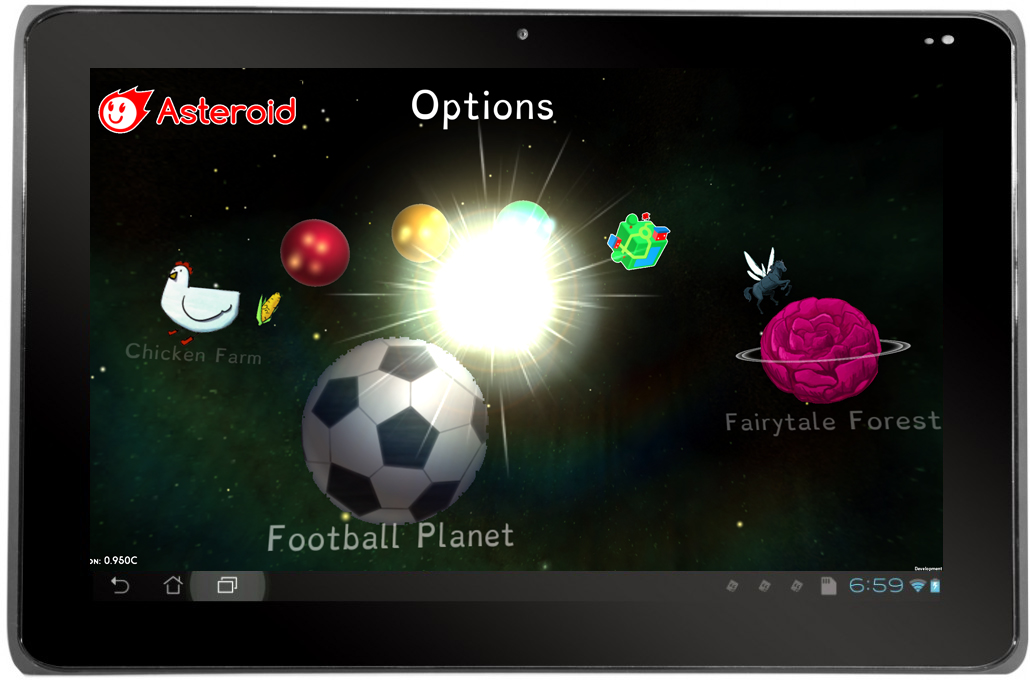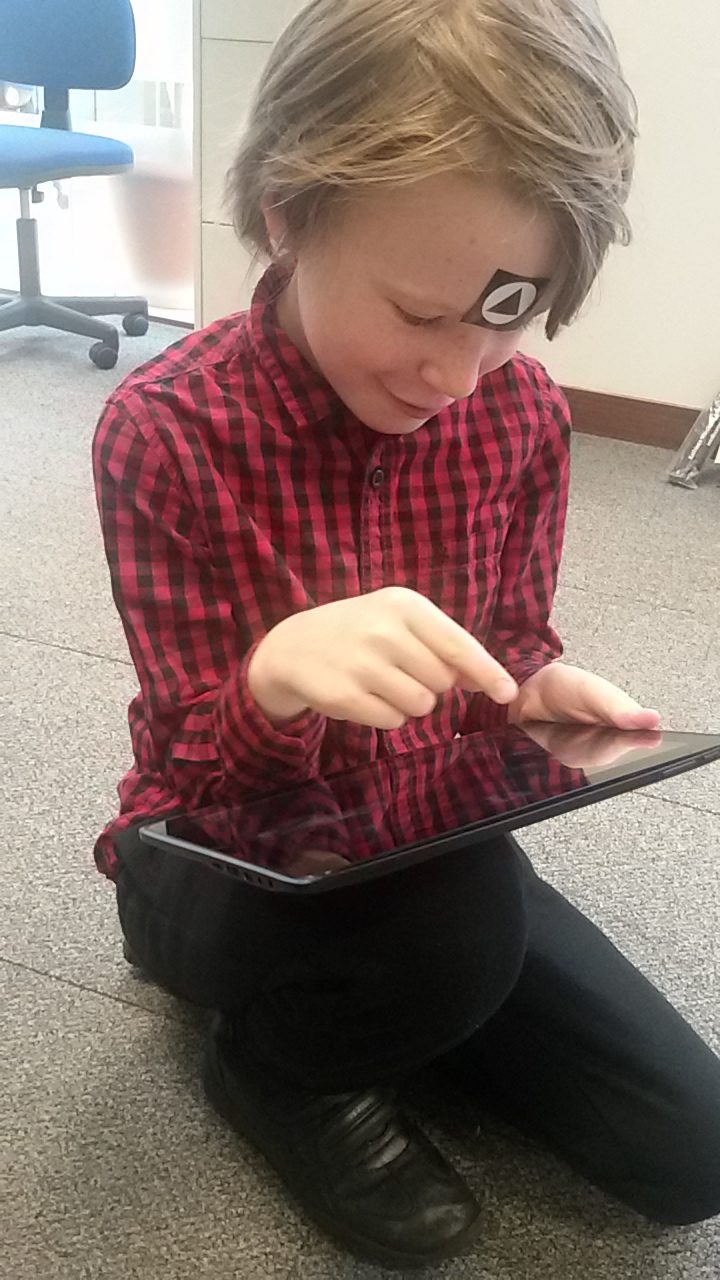
The fun 3D eye test – Accurate Streotest On a Mobile Device
If a game could detect a potential vision disorder, wouldn’t you want to try it? ASTEROID is a new game for children to test how well they can see depth by using a 3D tablet computer.
Every year half a million children are diagnosed or treated for binocular vision disorders such as Amblyopia (lazy eye) or Strabismus (squint). Clinicians use special eye tests called “stereotests” to measure how well the two eyes work together. Current clinical stereotests haven’t changed in decades and don’t always give accurate results.
ASTEROID is a new type of stereotest in the form of a game
Our goals:
- Create a fun game playable on special 3D tablet computers – no need for glasses
- Collect crucial information during play that can detect vision disorders and monitor the progress of treatment
- Help to make better clinical decisions
Asteroid User Guide
Send download link to:

Watch it on YouTube
For Orthoptists & Ophthalmologists
ASTEROID is reliable, easy, and portable and thus well-suited for clinical stereoacuity measurements. New 3D digital technology means that research-quality psychophysical measurement of stereoacuity is now feasible in the clinic.
For more on this see: ASTEROID: A New Clinical Stereotest on an Autostereo 3D Tablet | TVST | ARVO Journals
For more information on the efficacy, reliability and accuracy of Asteroid v1.0 using See3dTablet please consult the following articles:
- https://tvst.arvojournals.org/article.aspx?articleid=2770681 : Nicholas Port and colleagues compared v0.9 of ASTEROID against the same stimulus on a Propixx projector, and showed that the results agree very well despite the very different technology.
- https://onlinelibrary.wiley.com/doi/full/10.1111/opo.12737 : Ignacio Serrano Pedraza and colleagues compared the v0.9 and v1.0 and show that with the smaller dots of v1.0, thresholds are lower, coming into line with other stereotests.
- https://researchinvolvement.biomedcentral.com/articles/10.1186/s40900-020-00194-6 : Kathleen Vancleef and colleagues described their work with children in developing ASTEROID.
The Asteroid app was developed by the Neuroscience Department at the University of Newcastle,
Asteroid v1.0 is recognized as being highly accurate, with good test-retest reliability, while measuring a wider range of stereo threshold compared to clinical and research standards for assessing depth perception. The ASTEROID stereotest is a better clinical tool for determining baseline stereopsis and tracking changes during treatment for amblyopia and strabismus compared to current clinical tests.
Assessing binocular vision
“A measurement of stereoacuity (3D vision) is considered the ‘gold standard’ for assessing binocular vision.” – Cochrane review on interventions for infantile esotropia (Elliott & Shafiq, 2013)
Every year children visit eye clinics to be diagnosed or treated for binocular vision disorders. As part of this, the ophthalmologist will want to assess their binocular function to find out how well their two eyes work with each other and with the brain. The “gold standard” is the stereoacuity test.
Current Clinical Stereotests
The problem with current clinical stereotests is they can be difficult for small children. Often, they find the tests boring. This makes it hard to tell whether a child has stopped responding because they’ve genuinely reached their limit, or simply because they’ve lost interest.
Being printed on cards or perspex, these tests offer only a limited number of depth steps, so they aren’t always accurate. They can also be quite unreliable – the reported value can fluctuate within a factor of 4 just because of measurement error. Fairly often, the child just won’t cooperate at all.
Unfortunately, this leaves ophthalmologists making clinical judgments based on noisy or inaccurate data. And remember, we’re talking about clinical judgments such as when or whether to operate on a child’s eyes – there are more than 6000 such operations on the NHS every year. Therefore, it’s important that the evidence base supporting these interventions is adequate.
Solution
Asteroid-See3D Tablet
Mobile devices have become available which can present glasses-free 3D. We want to use this to embed a stereotest within a fun engaging game. Kids love playing games on mobile devices – as you’ll know if you’ve ever tried to wrestle your tablet back from a toddler. They’ll be giving their answers by touching the screen. We’ll be able to let them hold the tablet, because the front camera will automatically monitor how far away they are holding the device and calibrate the data accordingly. In addition. Because these devices are smart computers, we’ll be able to use all the same clever algorithms which have been developed over decades in vision science labs.
Purchase the Asteroid – See3D Tablet Online
Tell us what you would like to see from our test
Please fill out the form below: